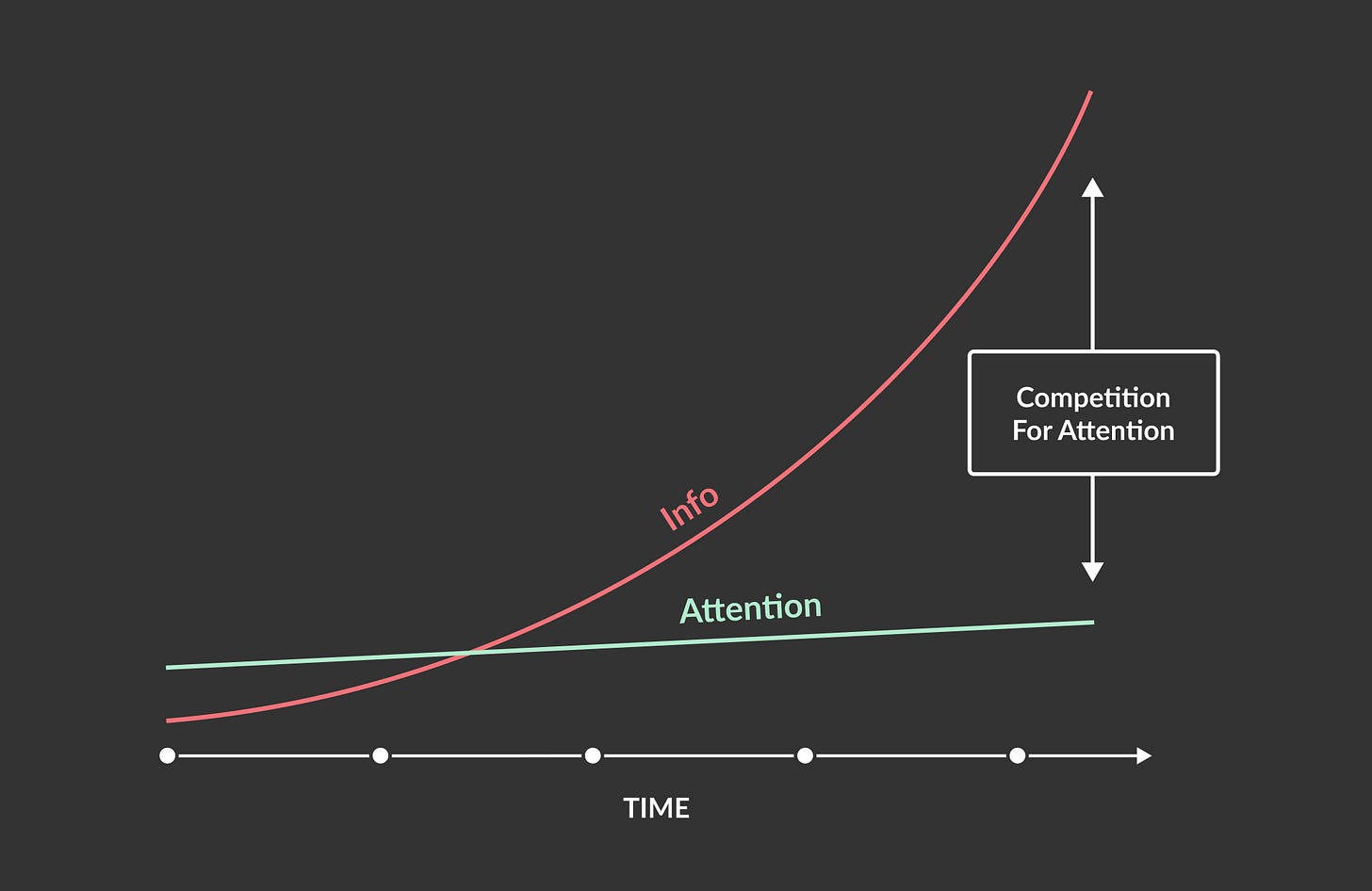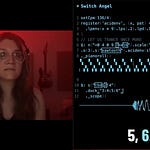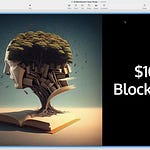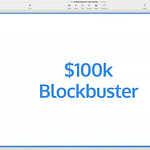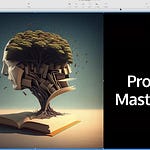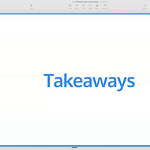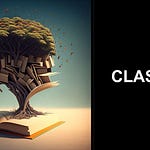Author’s Note: Out of all of my newsletter posts, this is one of the ones that I’m most excited to share with you. It will open your eyes to how you can use ChatGPT to drastically improve how quickly and deeply you learn.
Free subscribers get my breakdown of Augmented Reading. Paid subscribers get:
A step-by-step tutorial on how to create your own AI bot that helps you learn from any book or body of work 10x faster and better.
Full access to one of my learning bots so you can use it and get inspiration for your own bot.
A detailed ChatGPT prompt that will help you get embodied understanding of any book or academic study rather than just an intellectual understanding.
Q&A in the comments so you can ask me a question if you run into a challenge creating your bot.
I sincerely think this post could change your life. And I don’t say that lightly. I only say it because that’s what it did for me. So you’ll want to read it closely so you can get the full value.
Intro To Fractal Reading
The video above summarizes a reading method I developed three years ago that I still use every single day.
In short, Fractal Reading is a modern reading method that supercharges how fast and deeply you read while enhancing your enjoyment. It involves three steps:
First, engage with a book's free metadata—such as summaries, reviews, author interviews, and presentations.
Then, skim the key parts of the book—such as the first chapter and last chapter and then the first and last paragraph of each chapter.
Finally, slowly deep dive into the most relevant, high-value parts of the book while taking notes—The best approach I’m aware of for maximizing what you remember and understand is teaching what you learn to yourself and others (Explanation Effect).
This approach is likened to fractals, which maintain self-similarity at various scales, mirroring how book metadata reflects the book's core ideas in a condensed form.
Fractal Reading is contrasted with simply reading a book front-to-back as if every section were equally valuable and relevant to you.
This methodology was the crystallization of 6 years of studying, writing about, and teaching ‘learning how to learn’ where I focused on how to:
Learn faster
Learn better
Memorize what I learn
Conquer information overwhelm
Apply what I learn to get results
Use technology to accelerate everything
Out of all of my learning hacks, Fractal Reading provides the easiest, most immediate benefits and is easy to do consistently. That’s why I hear positive feedback on this technique more than any other that I’ve shared.
Furthermore, as you can tell in all of my research-backed articles, learning to research faster has helped me create better ideas, which has helped me become a better thought leader.
With that said, I have big news…
Over the past few months, I’ve found an even better approach that I also use everyday.
I call it Augmented Reading.
It’s an evolution of the previous approaches, and it capitalizes on AI:
Before I share more about Augmented Reading, it’s worth understanding a fundamental challenge of learning in today’s world, because the better we understand a problem, the better we can solve it…
The Modern Info Overwhelm Challenge
Earlier this week, I posted my #1 most-liked newsletter post so far:
The post is about the fascinating research of scholar David Galenson on the two lifecycles of creativity.
Galenson published a core book on the topic in 2007. After this, he published 8 academic studies along with several talks/interviews that expanded on the ideas from the book.
On the one hand, I’m fascinated by Galenson’s work. On the other hand, I don’t want to spend 20 hours on it to fully understand his entire body of work. I want to get a deeper understanding faster.
Can you relate?
Have you ever seen a 400-page book you really wanted to read but knew that realistically you’d never get to it?
Do you buy tons of books that you never read?
The technical term for this is Tsundoku…
The problem of Tsundoku is made even worse by the explosion of information:
To put the size of this information explosion in context:
The amount of content we humans collectively create online is doubling every year (also known as Zuckerberg’s Law).
The number of academic papers ever printed is doubling every 9 years.
In the coming years, the steepness of this information explosion will shoot through the roof as people use AI to 10x the quality and quantity of their own content. From there, it will explode again as tens of billions of AI agents/avatars create content on their own.
For example, this headline is a harbinger of this AI-avatar future:
Imagine a world that is just 1-3 years away with tens of billions AI avatars creating content, photos, voices, and videos that are indistinguishable from a human being.
So the question arises…
How do we learn the most rapidly and effectively given our limited time and exploding information?
With the advent of early-stage Artificial General Intelligence (AGI), I now answer the question in a profoundly different way…
Augmented Reading: How To Use ChatGPT To Learn From 10 Books In One Hour (Quick Overview)
With basic augmented reading, you first make sure that ChatGPT has the academic studies and books you want to explore in its database. Then, you have it do three things:
Coach you. Create an interactive coach that assesses where you are and conducts a coaching session. This works best with voice chat on mobile so that you can have an actual conversation with your voice alone. I now spend most of my car trips talking to ChatGPT rather than listening to podcasts.
Teach you. Create a course outline with subsections. Then, when you select a subsection, it creates a 5-minute lesson for you.
Summarize and synthesize. Summarize and synthesize the information with explanations, metaphors, implications, pros/cons, examples, stories that illustrate the ideas, takeaways, etc.
With advanced augmented reading, you create your own GPT bot (a feature which OpenAI just released in November 2023). With your own bot, you don’t have to reinvent the wheel every time you have a conversation with ChatGPT. And, you don’t forget about prompts that work really well. Rather, for each bot, you can create one prompt (up to 8,000 characters) that you reuse and iterate upon. Not only that, you can share your bot with others, and be an asset for you as a thought leader (more on this in the next section).
As a reference, it took me about 5 hours to create my first GPT bot, create the detailed prompt for it (1,250 words), and then test it. Now, I can use it for any book I come across forever. And as ChatGPT gets better, the value of the bot increases…
Augmented Reading Benefits In A Nutshell
More Fun. Because the value-density is so high, you never get bored going through dry spots in books where content isn’t relevant. You also don’t waste time looking for relevant parts. ChatGPT shares the parts that are relevant to you and helps you rapidly navigate from there.
Easier To Understand. Sometimes writers, particularly academics, use tons of jargon and abstract language that make their ideas taxing to understanding. ChatGPT rewrites their work in very simple and clear terms that make it quick to understand.
Deeper Understanding. With ChatGPT, the material becomes experiential and embodied very rapidly. With storytelling and coaching, learning moves beyond being primarily an intellectual exercise.
Free. Many academic studies, interviews, and lectures are free nowadays.
Fast. This approach saves ungodly amounts of time compared to reading a book front-to-back. It also allows you to get to key insights faster than Fractal Reading.
Thought Leader Assets. If you create a bot, it becomes an asset that you can give away for free, give away in return for an email address, or charge people to access. Not only that, you can turn the outputs of the bot into everything from newsletter content, to a free giveaway, to a paid report.
What I also love about this technique is that it uses AI to augment my intelligence rather than replace it. See my post on Human Super Intelligence (HSI) for more on this topic.
Now that you have a general understanding of Augmented Reading, let’s get into the nitty-gritty so you can put it into action.
I’ve spent hundreds of hours exploring how to get the most from ChatGPT. And for all of the prompts that went into my bot, I went through at least 20 iterations. My first attempts at building a valuable prompt are typically mediocre. But after lots of iteration they become indispensable. Not only that, most of the prompts I experiment with end up going nowhere while a few become life-changing. This post shares the the types of prompts that won the war of attrition and are ones that I regularly use:
Augmented Reading Tutorial (paid subscribers)
In the following sections, I provide paid subscribers with:
A step-by-step tutorial on creating your first GPT with your own files (includes links and images)
My actual GPT bot so you can get a feel for what your GPT can look like. The GPT will also help you more deeply learn David Galenson’s work.
A detailed ChatGPT prompt that will help you get embodied understanding of any book or academic study rather than just an intellectual understanding.
Tutorial on using voice chat with ChatGPT so you can talk to it while driving or walking.
Let’s dive in…





